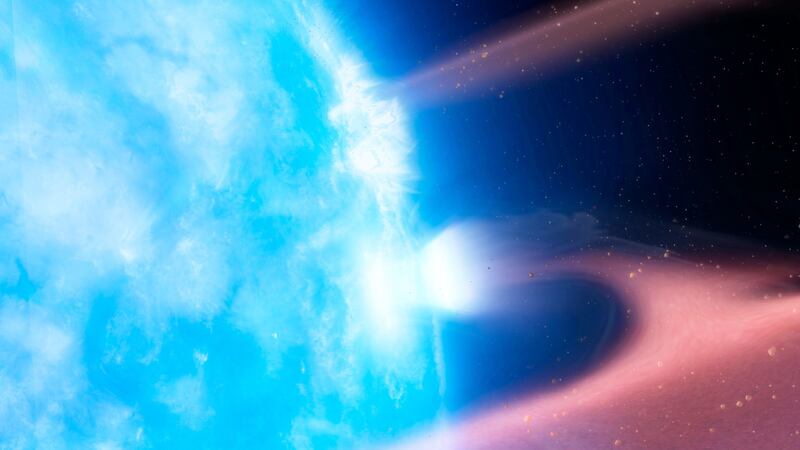The moment debris from destroyed planets crashes into a dead star has been seen for the first time.
Astronomers at the University of Warwick used X-rays to detect remnants of a planetary system colliding with, and being consumed within, the surface of a white dwarf – a star that has burnt up all of its fuel.
Experts say the results are the first direct measurement of rocky material entering the atmosphere of a white dwarf, and confirm decades of indirect evidence of this process in more than a thousand stars so far.
For several decades, astronomers have used various technologies to measure the presence of elements on the surface of the star and work backwards to calculate how much of an element was in the parent body.
But until now astronomers had not seen the material as it was pulled into the star.
Most stars, including our Sun, are destined to become a white dwarf, and more than 300,000 of them have been discovered in our galaxy.
Many are believed to be pulling in, or accreting, the debris from planets and other objects that once orbited them.
Dr Tim Cunningham, of the University of Warwick Department of Physics, said: “We have finally seen material actually entering the star’s atmosphere.
“It is the first time we’ve been able to derive an accretion rate that doesn’t depend on detailed models of the white dwarf atmosphere.
“What’s quite remarkable is that it agrees extremely well with what’s been done before.”
As a white dwarf is formed it potentially destroys or unsettles any objects orbiting it in the process.
As material from those bodies is pulled into the star at a high enough rate it slams into the surface of the star, forming an extremely hot plasma which eventually emits X-rays that can be detected.
Dr Cunningham added: “What’s really exciting about this result is that we’re working at a different wavelength, X-rays, and that allows us to probe a completely different type of physics.
“This detection provides the first direct evidence that white dwarfs are currently accreting the remnants of old planetary systems.
“Probing accretion in this way provides a new technique by which we can study these systems, offering a glimpse into the likely fate of the thousands of known exoplanetary systems, including our own Solar system.”
The astronomers used Chandra X-ray Observatory, normally used to detect X-rays from black holes and neutron stars, to analyse the white dwarf called G29–38.
The findings are published in the journal Nature.








